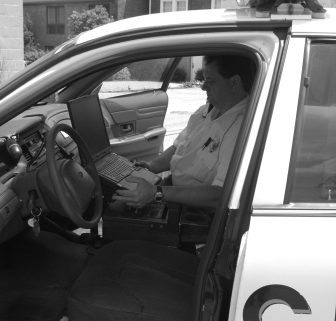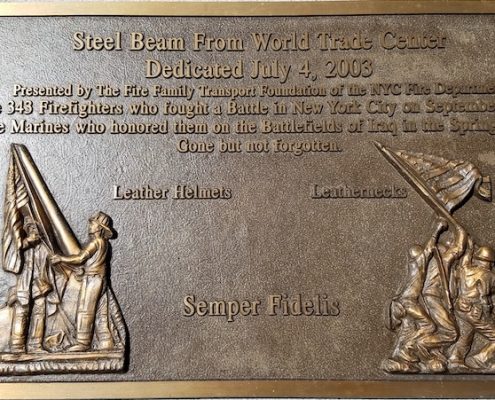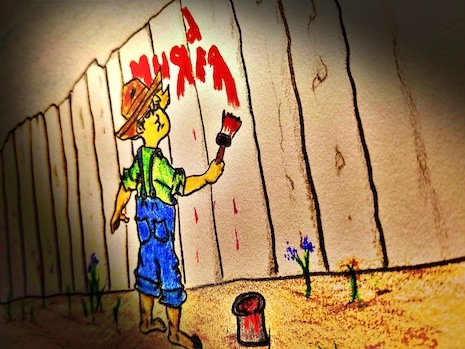The rules were simple—write a story about the photograph above using exactly 200 words, including the title, and the image must be the main subject of the story.
Shortly after the contest was announced stories then began arriving from all around the globe. Then, when the contest closed and the dust finally began to settle, we were left with a mound of twisted tales written by many talented writers.
We congratulate everyone who submitted stories, with a special congratulations to the winner and the others who placed in the top ten.
I understanding that judging was a tough assignment, as always, due to the large number of wonderfully-told tales. We also thank each of you for your support. The contest proceeds help the WPA continue to deliver top programs year after year.
The contest winner will receive the coveted Golden Donut Award, a handsome trophy, as well as free registration to a 2021 WPA event, either an in-person event or virtual (COVID restrictions may dictate which).
So, without further ado, the 2020 winning story, followed by the rest of the top ten, is – drum roll, please ………………………..

And I Must Play
by Nicolas Morales
This … is the Santa Cruz Beach Boardwalk, the greatest place on Earth. From the tasty food to the super fun rides and games, it has everything a boy like me could dream of. I like coming here so much, it feels like I live here. Whenever I go to one of the restaurants called the Surf City Grill, I eat like a king. But I think I order too much food sometimes because people like to stare at me when I eat. After that, I usually go play some laser tag, and I must be really good at it because nobody can hit me. I also like to go to the Cannonball Arcade, where my favorite games are Pac-Man and The Real Ghostbusters. The only weird part is that there is a big picture of me hanging on the wall outside. And every once in a while, a lady brings some flowers and lights a candle in front of it. Then she starts crying for a few minutes before she leaves. She looks familiar but thinking about it too hard makes the hole in my head hurt. Whoever she is, I hope she feels better.

Pinball Wizards
Ry Brooks
As break-ins go, the Boardwalk Arcade yielded slim pickings, but Nate and Joel needed cash, and quarters were better than nothing. The desperados plundered the coins from almost all the games before Joel noticed a strange looking pinball machine placarded “CAUTION – DO NOT PLAY!”
“Hurry,” Nate scolded. “We got no time to lallygag.”
“Hold on.” Joel dropped a coin into the slot and heard the unmistakable clatter of a full coin box.
The machine began to light up and made grinding sounds.
“Leave dat thing alone! Wanna get us caught?”
“Come ‘ere, help me get dis open. Dere must be a fortune in it.”
The pair worked on the box with pry bars, but it was unyielding. Suddenly, a hinged section of floor where they stood dropped away, and the two burglars disappeared before it snapped shut again.
It was the smell that eventually led to their discovery, but by then of course it was too late. Their desiccated remains each clutched a sack of quarters, and to this very day, in the depth of night when all is quiet, you just might hear the faint sounds of them scratching at the trap door to get out.

Game Over
by Lori Martin
Melanie tapped out another text.
You still coming, Theo? I’m outside Arcade Entrance C
Be there soon!
OK but hurry. You already missed the sunrise.
Thirty minutes later, she texted again. WHERE ARE YOU? R U MESSIN WITH ME?
I’m here.
C’mon! Are you going to meet me or not?
I am right here, Beautiful.
She smiled. Where? There’s no one here but some third shift arcade workers waiting for rides home.
MAYBE THEY AREN’T WAITING FOR RIDES
A shiver wormed its way down Melanie’s spine. Why was the sweet guy she’d been chatting with online for a year being so weird? What r u talking about?
You know how your husband died in that car crash last month?
Of course. I miss Danny like crazy.
Yeah. Well, I have another surprise.
Melanie started texting “Another?” but dropped the phone as an armed woman emerged from between some of the pillars that guarded the arcade’s entrance. Melanie’s eyes widened as memories from over twenty years ago triggered recognition.
“Surprise, Homewrecker! Theo is ME.” A chuckle rumbled from the woman’s smirking lips as she raised the gun. “Say ‘hello’ to Danny for me!”
4th Place
Defiance
by
Pamela Raymond
Under the brilliance of the midday sun, Mr. Brooks hobbled down the concrete promenade on his quest for a vacant bench and a cool breeze. Joints flexing cruelly, he quietly settled into a seat nestled between a row of plum painted pillars.
Mr. Brooks rubbed the silver tuft on his head. Perspiration glazed his weathered, dark skin as his once spirited eyes scanned the storefronts with puzzled curiosity. Not at all how I remembered it, he thought.
Four decades and a handful of years earlier, before gentrification took root, it was a modest Greyhound bus terminal. Back when the fight for dignity collided with the back of a billy club. When the law of the land whittled a man’s worth down to the circumstances of his birth.
That summer the buses rolled in beckoning a young Mr. Brooks to join the fed up and the cast down. He did.
Mr. Brooks eyed the plaque that posthumously sanitized his sacrifice. He shifted on the bench, a wince curling his bottom lip. He remembered the stiff baton his hip, and his dignity, once endured and wondered would the defiance ignited that summer ever shine brighter than the lights on the boardwalk.
Amusement Park Legacy
Looking over what I have created, I stare down mostly empty isles. In just a few minutes my dreams will be realized. My amusement park is done, full of lights, music and delightful family fun.
I cannot begin to express all the excitement I feel. Themed shops are about to open, thrilling rides are ready for boarding. I can smell corn dogs and cotton candy.
This is my legacy.
I stride through the gateway to fun.
In front of Cannonball Arcade, I hear a muffled pop, clutch at a pain in my chest, and stumble against the door frame. No one turns my way. My hand comes away bloody.
Shot?
This cannot be happening. NOT now!
The door opens, and I am dragged inside. Past the flashing lights to a storage room. Fresh cement nearly fills a pit.
“Thank you for the park. It is going to make me very rich” Unemotional words stab deep.
I struggle to stand.
“Why?” I gasp.
“Because, I want it all.”
The gun appears.
The silenced muzzle flashes and another bullet tears into my chest.
I fall backwards into the cold concrete quicksand.
Sinking slowly, I hear her voice.
“Goodbye…, Dad.”
The Dauphin
Fragrances of tepid ocean air, kettle corn, and cotton candy should have worked their magic inside my nostrils as I followed the boy under a lengthy covered breezeway. But I smelled nothing.
Nestled between an old style nickelodeon and a two star buffet named for the God of the Sea, his destination that day promised a surfeit of fun and games.
I watched as he surveyed the colorful notice affixed to the door, oblivious to my presence.
Annual Cannonball Arcade ‘Melee Sur La Promenade’ Video Game Tournament, Today!
Upon this hallowed ground, thirty years ago, I recalled hulking black cabinets with luminous marquees, standing shoulder to shoulder like silent sentries. Inside this darkened pleasure palace, upon a virtual field, furious pitched battles would crown a champion for the hit arcade title Melee Maniacs 2. My competitors were a much older motley crew. Some of them even attended high school! Endless practice, skill and fortitude, married with destiny had premeditated my victory, and my coronation became the stuff of local legend.
“I wish you could see me now, Dad.” The boy sighed.
“Son, I will be with you in spirit.” I smiled.
He opened the door and went inside.
Beware the Calliope Monster
“Beware the calliope monster,” the leaves whispered as they skittered around Adam’s boots. He stomped his feet to crush their murmurings. His gaze roamed the arcade, the tall columns now bright purple, not like the old days, but the carousel still spun out its tinny music.
Her Love’s Baby Soft perfume stung his nostrils as she appeared before him, purplish marks marred her beautiful neck.
“Hey, you. It’s been so long.” Adam reached to touch her arm, but she backed away “Let’s ride the carousel horses, you loved doing that.
Her words mingled with calliope music as a contorted grimace replaced her smile. “I hated the carousel. That was your thing.”
Tears seeped from the corners of Adam’s eyes. “No, you were my thing. My everything.”
“Adam, you strangled me.”
“I loved you.” His whisper scratched the cold air and with nothing to hold it up, plummeted to the stairs he stood on.
“You wanted to control me and now you do. Are you happy, Adam?” Sepia tinted air swept in, erasing her like he did that night on the carousel.
In death, he had her all to himself. Beware the calliope monster, indeed.
At the Amusement Park
Exuberant squeals. Infectious laughter, and sweet, childish giggles. The clanging of bells. The cheerful tune of a calliope. Raucous applause. Corn popping. The welcoming call of a barker. The snap of a banner in the breeze. The click, click, click, click of a rollercoaster rising, followed by the whoosh of its descent.
Bang! Bang! Bang! A moment of stunned silence. Screams of terror. Bang! Bang! Bang! The pounding of a human stampede.
Sirens blaring. The thunder of heavy vehicles. Bang! Bang! Bang! Radios squawking. Orders snapped. The coordinated march of men on the move. Bang! Bang! Bang! The staccato response. Bang! Bang! Bang! Breaths held. Silent stalking. Bang! Bang! Bang! Bang! Bang! Bang! Squeaking gurneys. The now fading wails of ambulances full of critical cargo.
The scratch of a match. The crackle of a candle flame. Murmured prayers. Quiet weeping. A sorrowful song rising to the heavens.
The rumble of a garbage bin being pushed over the pavement. The chuff of a broom. A spray of water. The squeak of a gate, the snick of a padlock, and the metallic clink of a chain against the iron fence.
The mournful cry of a pigeon. Dead silence.
Enough
Scraggly head down, the tattered hem of his disheveled kakis dragging the concrete, Ivar hobbled to the arcade doors unlocking them and flipping a switch causing the dark room to come alive with colorful dancing lights.
Jax and friends, leaving their perch on the picnic table outside, pushed past the elderly man.
“Move, Sling Blade.” Jax barked.
“He stinks,” Randy said.
“Disgusting,” Leo added.
But their daily vitriol was greatly diminished without Hunter, their leader.
“Over here first, Sling Blade,” Jax yelled.
Ivar hobbled to the pinball machine where his three tormentors waited, his key starting the loud music, dings, bells, and clacks.
“Where is Hunter?” Randy whined.
Leo shrugged. “Beats me.”
Ivar limped through the building unlocking foosball, air hockey, and video games. Returning to the boys he placed a Claw Game token on top of the pinball machine, mumbling, “Somebody dropped this,” then turned and shuffled back through the arcade and exited the building.
Leo grabbed the token, “Dibs,” and hurried to the tall glass box crammed with multicolored stuffed animals. Seconds later his blood curdling screams summoned Randy and Jax. The three stood, transfixed in horror. The Claw’s shiny hooks were positioned over Hunter’s severed head.
No Hoax
Sam led Fred to an arcade machine, a glassed-in box with the half torso of a full sized Indian in a turban sitting there.
“You place your hands on these two pads, and he reads your palm. “
Sam placed his palms on the pads.
The Indian raised his head, blinked, moved his right hand across the cards before him. Then in a quiet voice, said, “You will soon come into money. Guess the correct number between one and ten, you will get a card for a free sex lesson.”
“Seven”
The Indian frowned. “The number is Three.”
Fred smiled, “Wow. Give me a token.”
He inserted the token and placed his hands on the pads. The Indian went through the motions. “Tomorrow will be a very good day for you. Guess the correct number between one and ten, you will get a card for a free sex lesson.”
“Six.”
The Indian frowned. “The number is Three.”
As they walked back to the food court, scattering the pigeons, Fred shook his head, “That’s a hoax. You can’t win a free sex lesson.”
Sam shook his head, “Oh, no. My girl tried and she won twice.”
The Contest Judge

Assuming the mantle of editor-in-chief in 2002, Linda Landrigan has also edited the commemorative anthology Alfred Hitchcock’s Mystery Magazine Presents Fifty Years of Crime and Suspense (2006) and the digital anthology Alfred Hitchcock’s Mystery Magazine Presents Thirteen Tales of New American Gothic (2012), and has found time to be active on the board of the New York City Chapter of the Women’s National Book Association. In 2008, Linda and her “partner in crime,” Janet Hutchings – editor of Ellery Queen’s Mystery Magazine – were presented with the Poirot Award from Malice Domestic for their contributions to the mystery genre.
We will soon contact each the top ten authors. Please watch for an email message from lofland32@msn.com. The subject line will read “Golden Donut Contest.” Again, congratulations to all!
*The photograph used as the basis for the 2020 stories is of the boardwalk in Santa Cruz, Ca. Denene (my wife) took the shot on Christmas Day several years ago.
It is our annual tradition to visit a beach each Christmas Day, where we walk on the sand and listen the calming ocean sounds.
















 On January 1, 2020, 42-year-old New York State Police Investigator Ryan Fortini died as the result of cancer that he developed following his participation in the search and recovery efforts at the World Trade Center site.
On January 1, 2020, 42-year-old New York State Police Investigator Ryan Fortini died as the result of cancer that he developed following his participation in the search and recovery efforts at the World Trade Center site. NYPD Officer Matthew von Seydewitz died on January 27, 2020 as the result of cancer that he, too, developed following his participation to the search and recovery mission at the World Trade Center site. He was 50 at the time of his death
NYPD Officer Matthew von Seydewitz died on January 27, 2020 as the result of cancer that he, too, developed following his participation to the search and recovery mission at the World Trade Center site. He was 50 at the time of his death On May, 25, 2020, Connecticut Trooper First Class Eugene Baron died at the age of 56 as the result of cancer contracted while assisting with rescue and recovery efforts at the World Trade Center site. Trooper Baron was an 18-year veteran of the Connecticut State Police prior to medically retiring. He leaves behind three children, parents, two sisters, his girlfriend and her two children.
On May, 25, 2020, Connecticut Trooper First Class Eugene Baron died at the age of 56 as the result of cancer contracted while assisting with rescue and recovery efforts at the World Trade Center site. Trooper Baron was an 18-year veteran of the Connecticut State Police prior to medically retiring. He leaves behind three children, parents, two sisters, his girlfriend and her two children.













 We already know that Ted Bundy, Dahmer, and David Berkowitz each confessed to brutally abusing and/or killing animals during their childhood. There are studies that show a disturbing trend of children who grow up in homes where animals were abused, often continue on to become animal abusers themselves. After all, kids do indeed like to “do as mommy and daddy do.”
We already know that Ted Bundy, Dahmer, and David Berkowitz each confessed to brutally abusing and/or killing animals during their childhood. There are studies that show a disturbing trend of children who grow up in homes where animals were abused, often continue on to become animal abusers themselves. After all, kids do indeed like to “do as mommy and daddy do.” According to a study reported in “DA’s Link Pet Abuse, Domestic Violence,” it is estimated that 40% of women elected to remain in the abusive household/relationship due to a very real fear of what would/could happen to the family pet, if they left.
According to a study reported in “DA’s Link Pet Abuse, Domestic Violence,” it is estimated that 40% of women elected to remain in the abusive household/relationship due to a very real fear of what would/could happen to the family pet, if they left.






